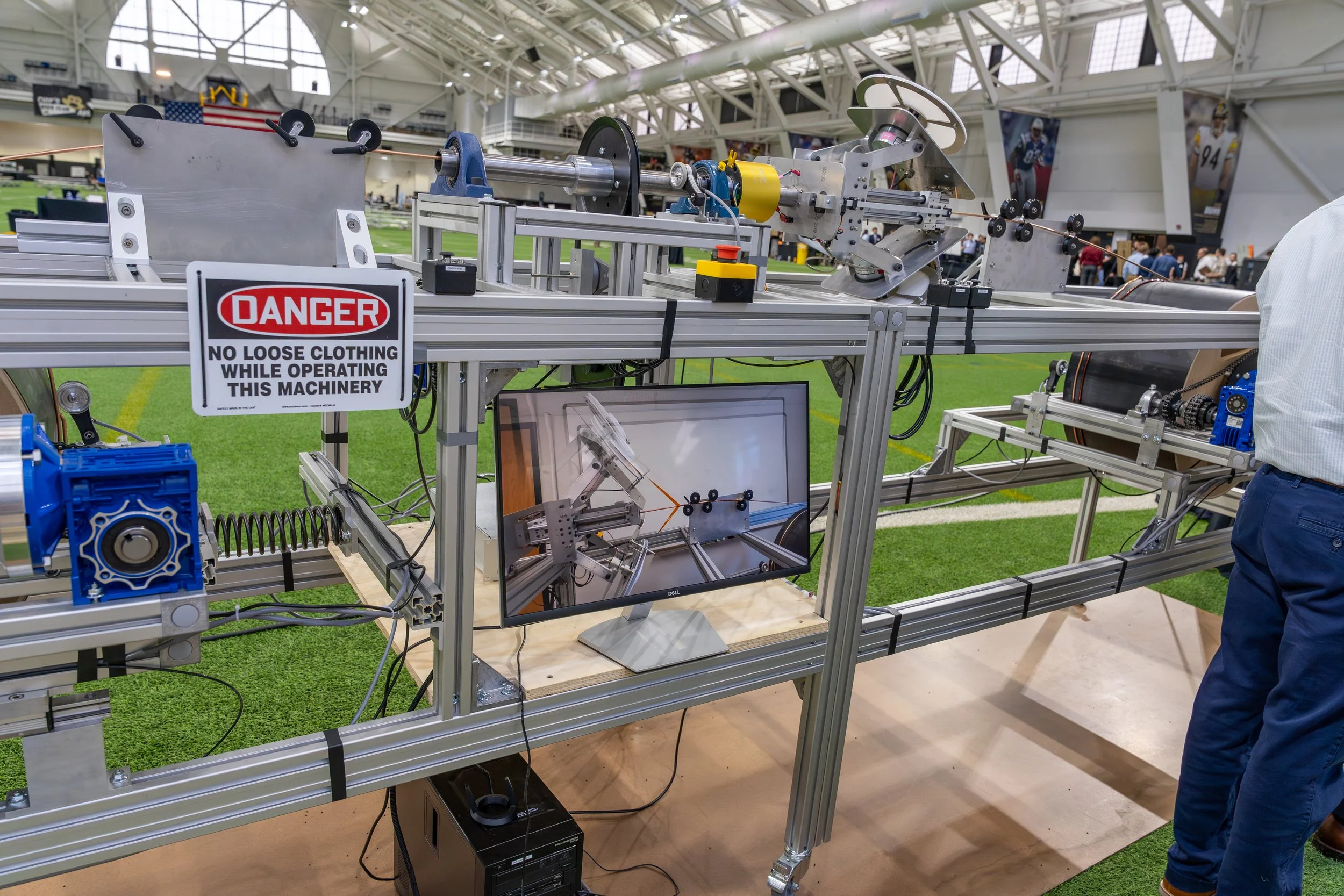
Automated Insulation Wrapping Machine
Image Credit: cu.engineering
Background
In my school's senior design program, teams' preferences and clients' evaluations of teams' applications determine the project assignments. My team was paired with the CU Physics department in collaboration with Advanced Conductor Technologies to assist in developing high-temperature superconducting cables. Our project was to design a new machine that could insulate superconducting wires of varying diameters using different widths of dielectric films. The objective was to create a machine that would improve cable performance by minimizing defects and reducing the need for operator intervention during the manufacturing process.
Image Credit: Team 04, Design Center Colorado
Teamwork
Good teamwork is a crucial aspect of engineering. To provide teams with the best chance for success, the Design Center Colorado staff spends countless hours designing ideal teams. They aim to align students' interests, academic standings, and communication styles.
However, mistakes happen. I was accidentally placed on a team without shared interests and with a conflicting communication style, which caused frustration and breakdowns in communication. I tried to adapt my style, improve time management, and collaborate with our director, but the group dynamic remained strained throughout the project.
This experience taught me how fragile team dynamics can be and the importance of quality dynamics. I developed skills in communicating during difficult situations and managing conflicts. I also realized that my tenacity proved helpful in this challenging environment, allowing me to continue working despite the challenges.
Image Credit: Jessica Corbitt
Design
Because our client wanted something new and innovative, they refused to show us their current machine. Having no prior experience with this manufacturing process, we started researching it and the machines used in similar processes. We investigated their critical mechanisms, brainstorming how to integrate them into a new design. While brainstorming, my sketching skills helped streamline communication within our team. I could quickly draw any ideas the team developed, ensuring we all had the same conceptualization. I found that communicating visually is the best way to ensure that new designs are easily understood.
Additionally, the client wanted the ability to control the tape's tension. After much research on web-tensioning systems, I determined that no tensiometers available on the market or within our budget could give accurate readings while mounted on a spinning machine, so I got creative.
The magnetic brakes we used were half of a web-tensioning system on the market. The other half was a follower-arm potentiometer. The stock version of this potentiometer wouldn't work for our application because the arm was too short and wouldn't maintain contact with the tape spool if mounted on a spinning machine. To counteract this, I replaced the follower-arm with a longer one and spring-loaded it, ensuring constant contact with the spool. Because of these alterations, the integrated code had to be changed, but we designed a sensor we couldn't find on the market for a fraction of the price.
Image Credit: cu.engineering
Safety & Testing
As the Testing Engineer, I documented all client specifications and requirements, emphasizing effective communication to clarify how their needs influenced design and manufacturing. Prioritizing requirements was crucial due to our 10-month timeframe and limited budget, so I used color coding to organize specifications. Through discussions with the client, I aligned our priorities with their expectations, preparing them for any unmet requirements. These interactions taught me a lot about communication and the importance of being able to present expert knowledge to any audience.
I developed and executed tests using aspects of the Jidoka process to create bottom-up tests. This approach minimized testing time and controlled variables, ensuring that any unfavorable results in top-level testing stemmed from synchronization issues between our winding machine and the client's cable feed system. Thus, our clients could resolve problems with the machine without our team's help. This experience taught me a lot about prioritization and time management.
As the Safety Engineer, I assessed potential dangers associated with testing and operating the machine by researching OSHA standards and creating a safety checklist for our team. Safety is inconvenient by design, making compliance a considerable challenge. I encouraged my colleagues to adhere to safety protocols by explaining the complications that could arise from neglecting them.
Image Credit: Team 04, Design Center Colorado
Engineering Projects Expo 2024
At the end of the year, we presented our project at the Design Projects Expo. The main challenge was effectively conveying the technical aspects to a diverse audience. Our presentation included a poster and a verbal component, requiring us to enhance our visual, written, and verbal communication skills.
We designed the poster to be easily understood by the general public while making our verbal presentation more technical for experts. Creating a visually appealing and informative poster was challenging, as engineers typically struggle with aesthetics. We focused on content that highlighted key aspects of our project and chose an appropriate layout, colors, and images. After several critiques, we finalized the poster.
For the verbal presentation, each team member spoke about their contributions. We practiced as a group to ensure our delivery and transitions were polished. We directed audience questions to team members based on their expertise, which was vital for both audiences.




